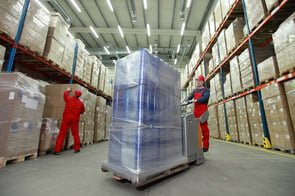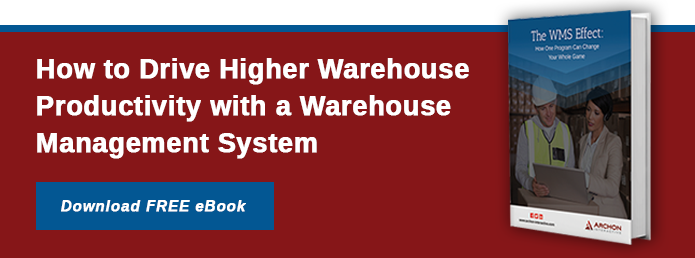 Mastering warehouse efficiency is a delicate balance between maintaining just enough stock to fulfill incoming orders without running out or ordering too much. While it is obvious that being understocked can cause delays in order fulfillment if you run out, some people fail to understand that being overstocked can cause just as many problems for their team. A Warehouse Management System can be used to control the flow of inventory through your warehouse and reduce the amount of fluctuation happening in your locations.
Mastering warehouse efficiency is a delicate balance between maintaining just enough stock to fulfill incoming orders without running out or ordering too much. While it is obvious that being understocked can cause delays in order fulfillment if you run out, some people fail to understand that being overstocked can cause just as many problems for their team. A Warehouse Management System can be used to control the flow of inventory through your warehouse and reduce the amount of fluctuation happening in your locations.
When and How to Replenish
Warehouse management software constantly gathers order and transaction data about each individual product in your warehouse. With this data, it can tell you how much of a product is being sold, how much you can expect to sell in coming weeks, and when you should order more. All of this information together will help you minimize waste by only ordering exactly what you need in a given time period. If you end up selling more than the system anticipates, it can automatically create a new order for more product as soon as inventory gets low, maximizing your warehouse efficiency so you won't miss a beat.
Product Movement
Warehouse management systems often allow you to reduce the number of steps in your order fulfillment process either by automating them or consolidating them into simpler steps. Nevertheless, it is important to remember that every time you are forced to handle the product, there is room for human error. In especially busy warehouses where items are being put away rapidly so that the picking team can come right behind to pick them, often working several orders at a time, it is easy to see how an item can get misplaced. Whether it is placed in the wrong location on accident or placed with the wrong order on the picker's cart, lost items account for a large amount of shrinkage within a warehouse.
Fortunately, your Warehouse Management System will flag items that are incorrectly stowed or that are in the wrong order, which helps manage the flow of inventory more closely. By alerting your quality control team and the picker at the time the error occurs, they can immediately review and make corrections before spending valuable resources investigating where the product disappeared to.
Managing Returns
In a perfect world, product would move from your vendors, through your warehouse and to the customers without a single complaint. In reality, your warehouse efficiency can be thrown off by returns and exchanges. Products get damaged in shipping, people order the wrong items, and occasionally you make a mistake in their order, prompting them to return the unordered item. Whatever the case may be, your Warehouse Management System needs to account for receiving returns and determining if the product goes back into your inventory or gets disposed of. A sudden onslaught of returns can cause you to have too much inventory of a particular item. Fortunately, since your WMS is waiting to place the next order until your inventory drops below a predetermined level, you don't have to worry that another shipment is going to hit your warehouse until you're ready.
Warehouse Management Systems offer a number of other tools that allow you to control inventory flow more closely and accurately. These tools maximize your efficiency by making the best use of your available storage space, keeping your warehouse organized, and ensuring that errors are handled immediately to avoid any ongoing inventory issues. All of this contributes to higher warehouse efficiency with fewer errors and more on-time deliveries.




